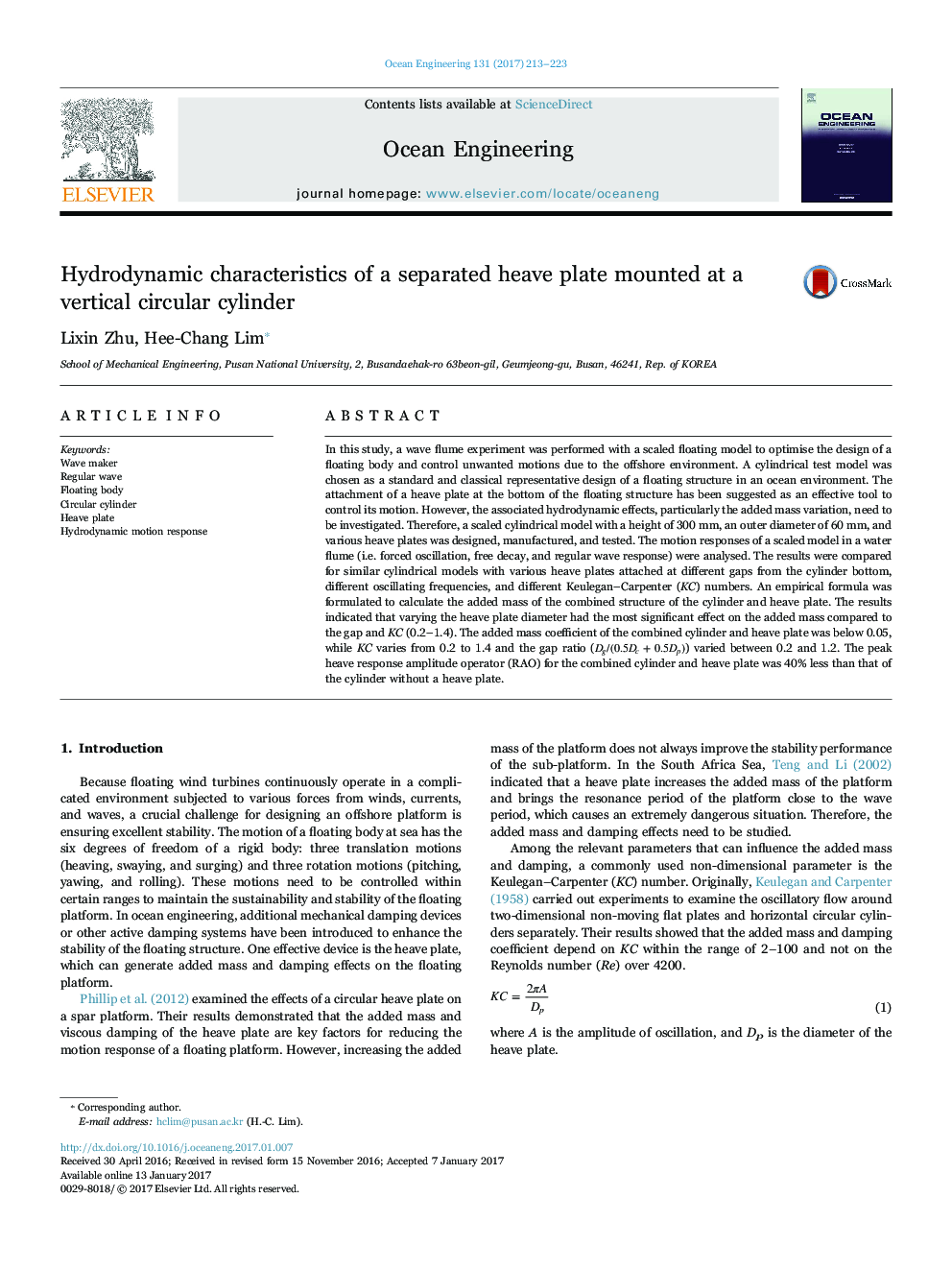| Article ID | Journal | Published Year | Pages | File Type |
|---|---|---|---|---|
| 5474538 | Ocean Engineering | 2017 | 11 Pages |
â¢We observed the dynamic characteristics between waves and a floating cylindrical body with a heave plate.â¢We examine the effects of heave plates on the movement of a vertical circular cylinder placed in a simulated offshore environment.â¢The heave plate at the bottom of the floating structure was observed to be an effective tool to control its motion of main cylinder.â¢Varying the heave plate diameter had the most significant effect on the added mass compared to the gap and KC (0.2-1.4).â¢The peak heave response amplitude operator (RAO) for the combined cylinder and heave plate was 40% less than that of the cylinder without a heave plate.
In this study, a wave flume experiment was performed with a scaled floating model to optimise the design of a floating body and control unwanted motions due to the offshore environment. A cylindrical test model was chosen as a standard and classical representative design of a floating structure in an ocean environment. The attachment of a heave plate at the bottom of the floating structure has been suggested as an effective tool to control its motion. However, the associated hydrodynamic effects, particularly the added mass variation, need to be investigated. Therefore, a scaled cylindrical model with a height of 300Â mm, an outer diameter of 60Â mm, and various heave plates was designed, manufactured, and tested. The motion responses of a scaled model in a water flume (i.e. forced oscillation, free decay, and regular wave response) were analysed. The results were compared for similar cylindrical models with various heave plates attached at different gaps from the cylinder bottom, different oscillating frequencies, and different Keulegan-Carpenter (KC) numbers. An empirical formula was formulated to calculate the added mass of the combined structure of the cylinder and heave plate. The results indicated that varying the heave plate diameter had the most significant effect on the added mass compared to the gap and KC (0.2-1.4). The added mass coefficient of the combined cylinder and heave plate was below 0.05, while KC varies from 0.2 to 1.4 and the gap ratio (Dg/(0.5Dc+0.5Dp)) varied between 0.2 and 1.2. The peak heave response amplitude operator (RAO) for the combined cylinder and heave plate was 40% less than that of the cylinder without a heave plate.
